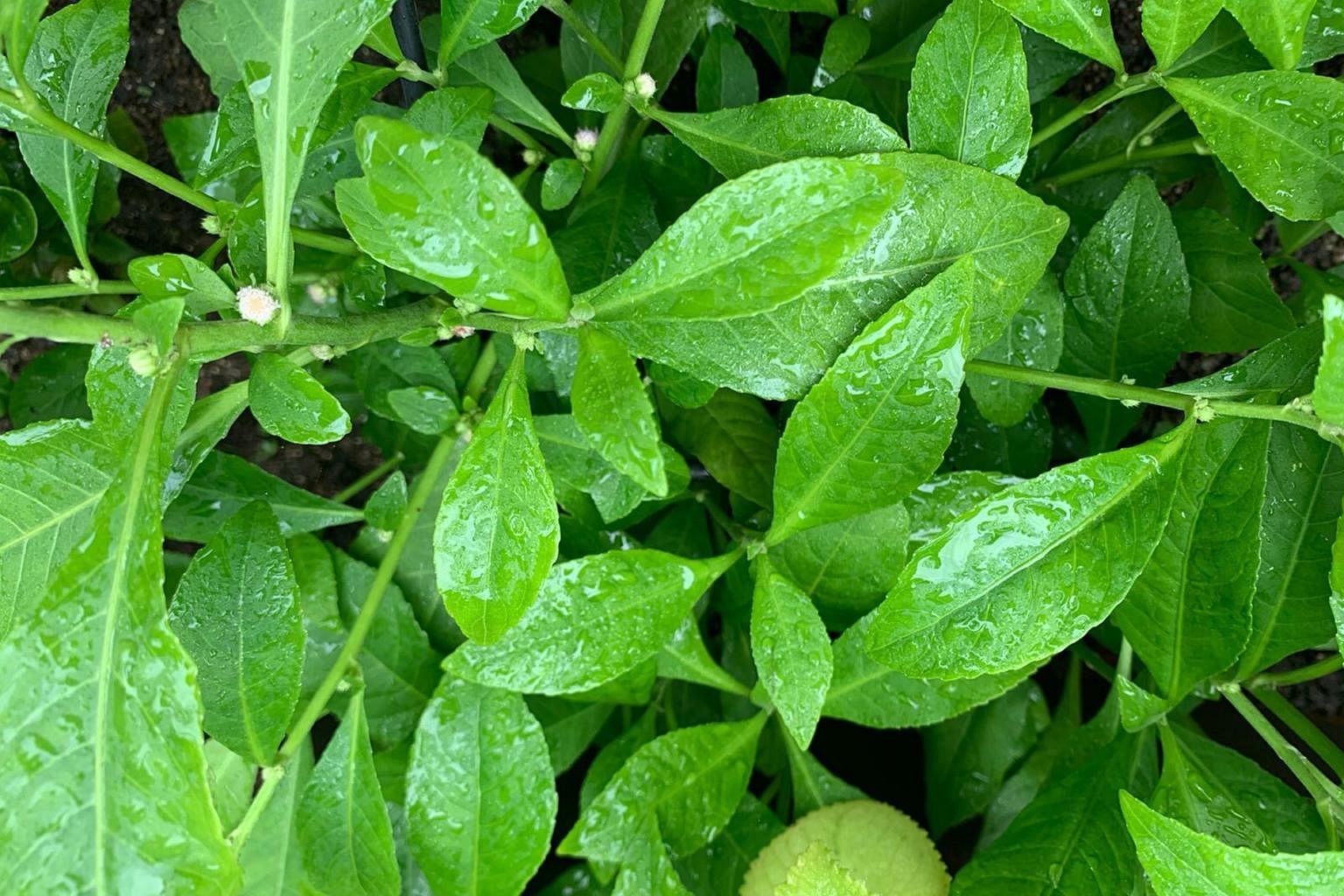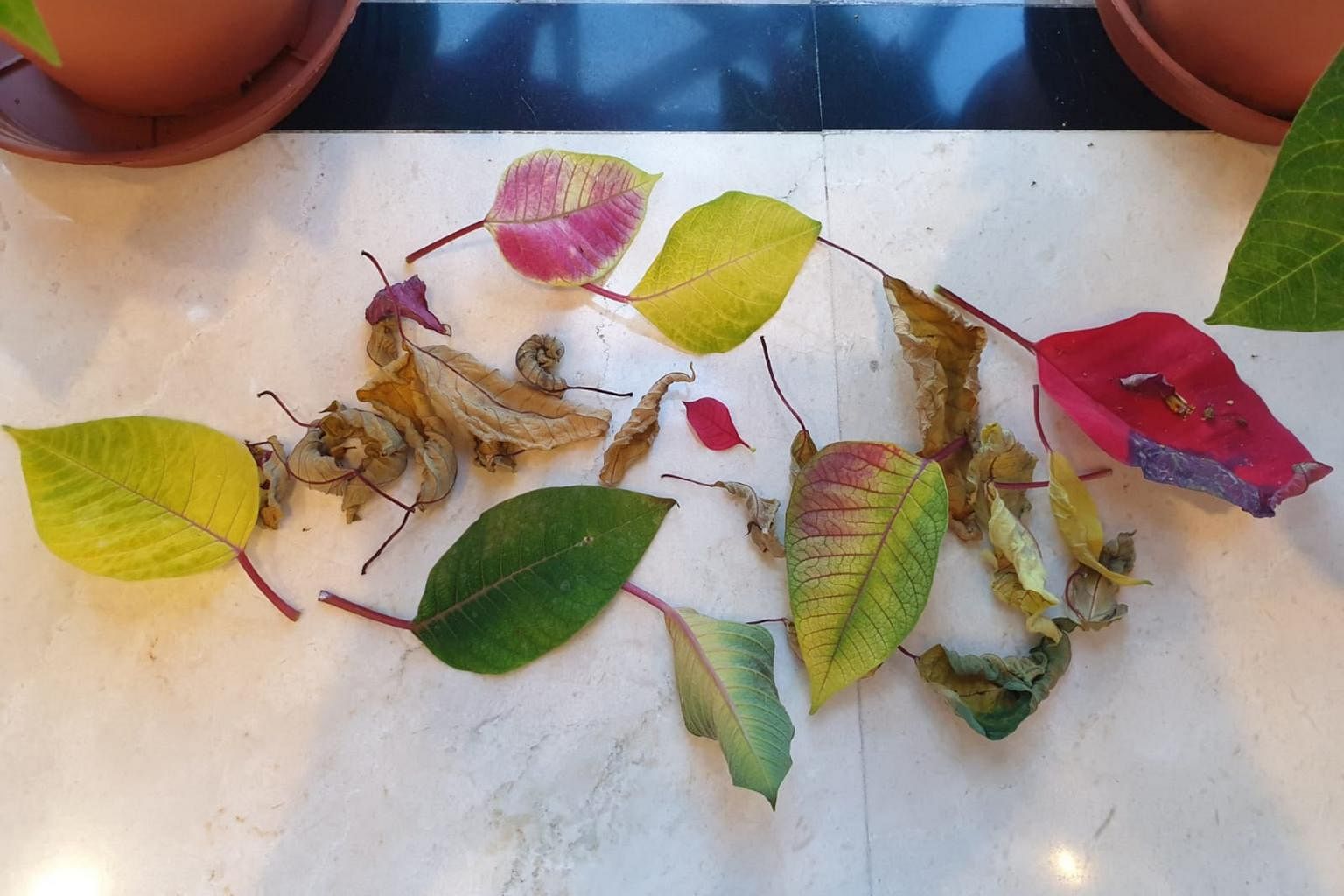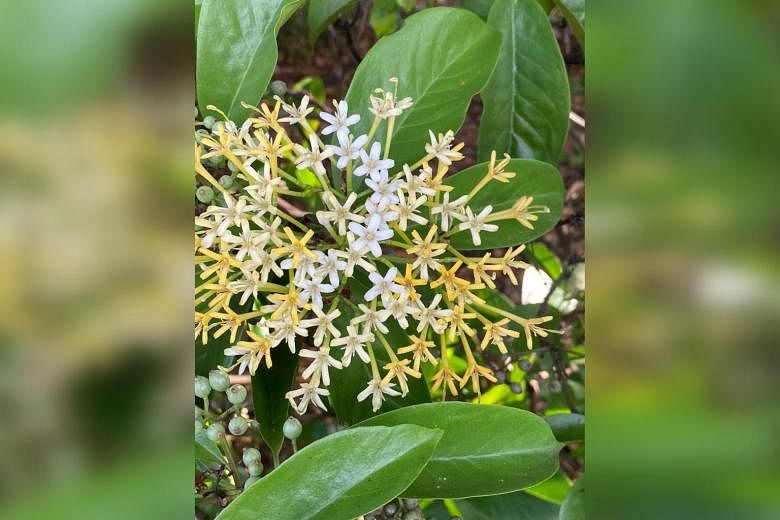Root awakening
River tarenna: A fragrant native shrub of Singapore
My friends and I visited HortPark and were attracted to a lovely, sweet smell that came from this shrub with white and yellow flowers. Is the plant local and how does it propagate? Is it available for sale in nurseries?
Vanisa Lee
The plant, commonly called the River Tarenna, is a native plant of Singapore. Its botanical name is Tarenna fragrans.
It needs to be grown under direct sunlight outdoors and is best propagated from seeds. Stem-cuttings can be challenging to root.
The plant may not be widely available for sale locally, but it can sometimes be found at major nurseries in Singapore.
Smooth joyweed is edible

My friend gave me this planT. What is it?
Kris Ang
The plant is botanically known as Alternanthera paronychioides and its common name is Smooth Joyweed. It often grows in wet places and its tender young shoots and leaves may be consumed as a vegetable. The plant propagates easily from stem-cuttings, which are first rooted in water.
Black spots on poinsettia bracts may be due to fungal disease

I received two potted poinsettias for Christmas. They look full and continue to grow new leaves, but they also shed both dried brown leaves and healthy-looking red and green ones. Some leaves have dark brown spots which become holes, while others produce a milky white substance. I give each pot about half a cup of water every few days. They get 10 hours of filtered sunlight and 14 hours of darkness - I read that it gives the leaves their red hue. To ensure complete darkness, I move the plants into the storeroom. How can I prevent them from losing leaves? What are the black spots and milky white substance and how do I get rid of them?
Stephanie Chia
The white milky substance is the sap that is characteristic of plants which are relatives of the poinsettia, in the family Euphorbiaceae. The sap is somewhat toxic, depending on the plant species, and should not come in contact with the eyes. If the sap gets onto any part of the body, wash with water and seek medical attention.
As for the black spots, they could be due to fungal infection of the colourful bracts. They may have been caused by rough handling or injury which allowed disease-causing organisms to invade the plant.
Keep the plants in a bright and ventilated location. The media should not be too wet. The dropping of leaves could be due to the lack of light caused by the heavy canopy of leaves of the plant.
The poinsettia is best treated as a festive display plant and discarded after it passes its prime. It can be difficult to get the plant to produce the characteristic red bracts again in the lowland tropics of Singapore.
Answers by Dr Wilson Wong, an NParks- certified practising horticulturist, parks manager and ISA-certified arborist. He is the founder of Green Culture Singapore and an adjunct assistant professor (Food Science & Technology) at the National University of Singapore.
Have a gardening query? E-mail it with clear, high-resolution pictures of at least 1MB, if any, and your full name to stlife@ sph.com.sg. We reserve the right to edit and reject questions.
Gardening talks
What: High-rise Edible Gardening Basics by Dr Wilson Wong
When: Jan 23, 2 to 2.45pm
Info: Registration is required. Go to go.gov.sg/highriseedibles
What: Gardening Q&A (January) by Dr Wilson Wong
When: Jan 23, 3 to 3.45pm
Info: Registration is required. Go to go.gov.sg/gardeningqa2

